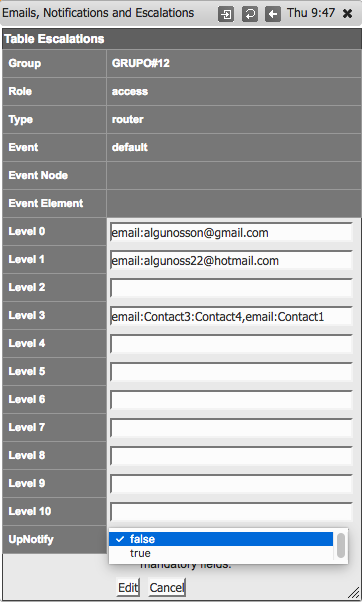| Table of Contents |
|---|
Escalations
Configuring escalations in NMIS8 happens in two locations. The first location is in System -> System Configuration -> NMIS Configuration area (escalation in the drop down) which stores it's settings in Config.nmis. This is where the escalation levels are located. An escalation level links an elapsed amount of time to a name. For example, by default escalate0 happens immediately (0 seconds) escalate1 happens after 300 seconds, and so on. The names and times are configurable.
...
- When UpNotify is "true", for any "down" message which is sent an UP notification will be sent when the node or element comes up, then lets you know the event is "resolved".
- When set to "false", no notification will be sent when the node or element comes up.
Preventing Escalation Storms
Consider a situation where an edge router goes down, and from the preceptive of NMIS all the nodes behind it appear to be down. By default nmis would send escalation emails for all the nodes behind the edge router. In order to only have NMIS send the escalation email for the edge router and not the nodes behind it, the 'depend' attribute can be set on the nodes behind the edge router. Setting the depend value to the edge router for the nodes behind it will prevent excess escalation emails.
Consider the above topology. If bnelab-rr1 goes down, we don't want escalation emails from the other six nodes. For each of the other 6 nodes we would edit the depend attribute to contain the value of bnelab-rr1.
Notice that via the GUI edit node context you can select multiple nodes for the depend value. This may be advantageous if the site has redundant edge routers.


